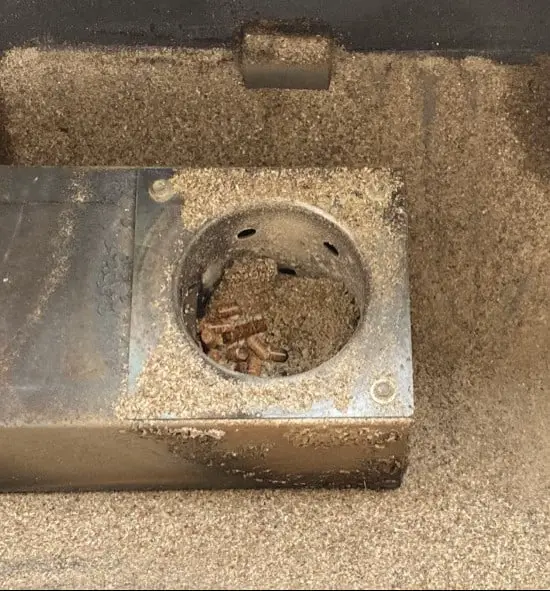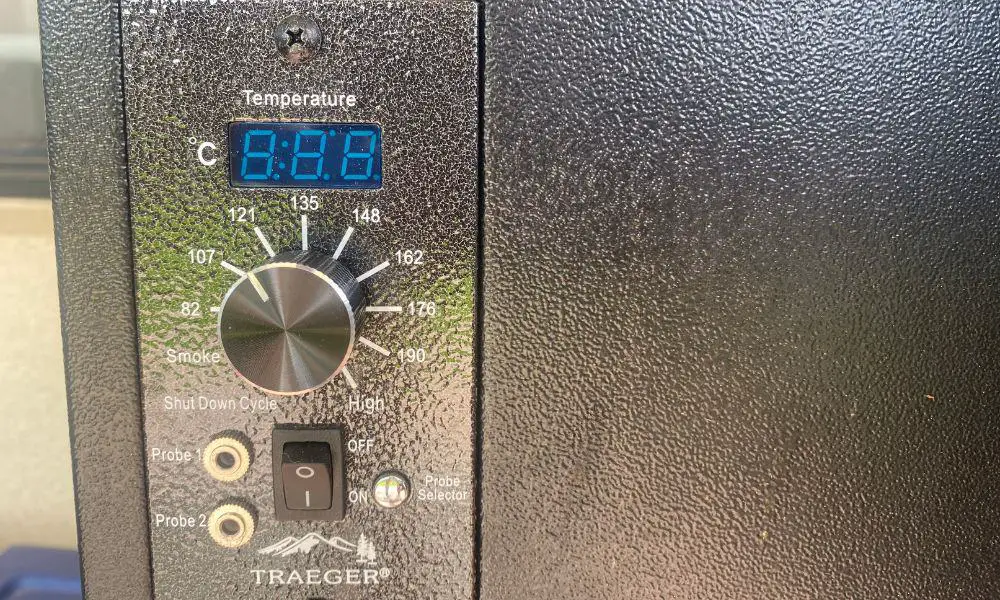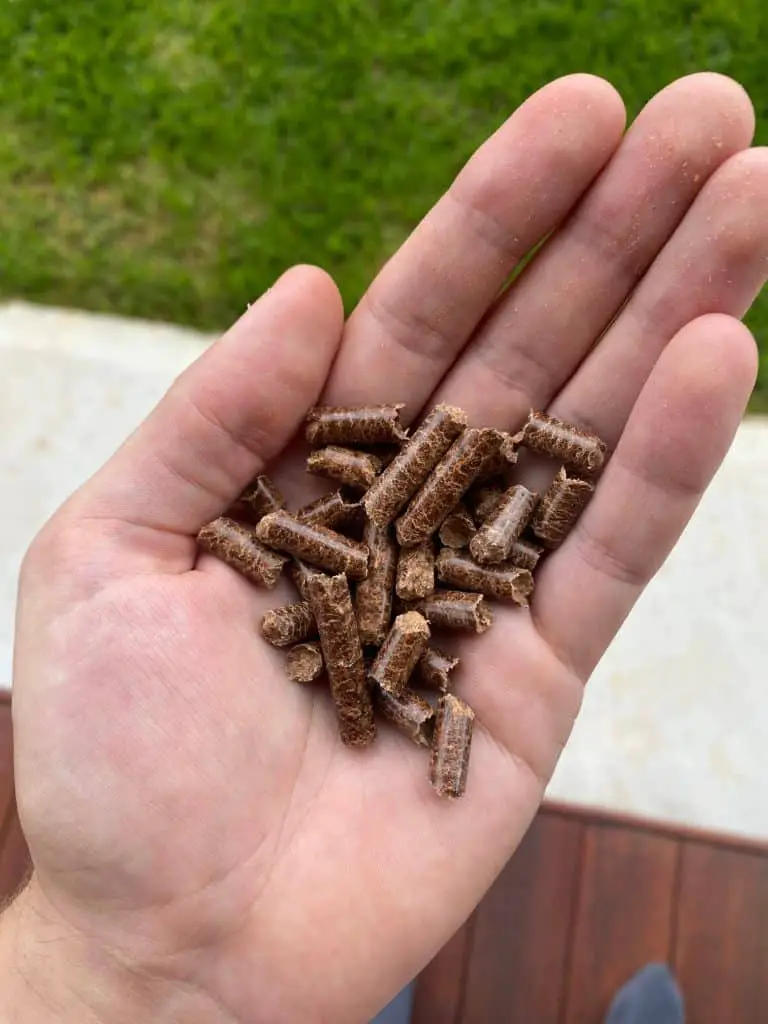It’s so frustrating when things don’t go to plan. Especially when the plan involves delicious barbecue.
It’s normal if your pellet grill temperature is fluctuating during the cook. But if you’re experiencing the high temperature error or your pellet grill is consistently pumping out too much heat then it’s time to do some investigating.
After contacting a few established pellet grill companies, scouring forums and the web, and drawing on my own experience as an avid pellet grill user, here is the master guide with all the most common reasons your pellet grill is getting too hot.
Pellet grills are built to cook to the average temperature, and deal with fluctuations automatically. It is perfectly fine for your pellet grills temperature to fluctuate 5-10°F each side of your desired cooking temperature.
However, when your pellet grill is constantly smoking at 25°F-50°F hotter than you want (or more), then the end product is going to be affected.
Here are the most common reasons why your pellet grill is getting too hot and how you can investigate and fix the problem.
The Fire Pot Isn’t Clear

One of the most common reasons the temperature of your pellet grill can climb comes from having a fire pot filled with ash and wood dust.
As the wood pellets burn up, the residue of ash and wood dust is left in the bottom of your pellet grill. If left for long periods of time, if you start the grill then the build-up can cause a flare-up which can impact the whole cook.
To check if this is the issue:
- Make sure your pellet grill has completely cooled down.
- Take off the grill grates, grease tray, and heat baffle.
- Take a look in the firepot and observe how much ash and wood pellet dust there is.
- Don’t blow on it! Trust me — it just goes everywhere.
- Instead, use a vacuum to carefully clean out the excess wood dust.
Gently lower the head of an ash vacuum into the fire pot, being careful not to make contact with any mechanisms to avoid damaging anything accidently. The suction from the vacuum will remove all the old wood dust and ash that may be causing temperature issues for you.
A clogged fire pot can also cause low-temperature issues in your pellet grill if the pellets aren’t igniting at all. Alternatively, it can cause your Traeger to suddenly shut off during the cook due to too high or too low temperatures.
Started Up Incorrectly

Starting the grill correctly can play a major part in achieving a consistent temperature.
There are a few quick steps you can take to ensure a smooth start-up every time:
- Always check the firepot is clear of wood pellets and wood crumbs.
- Make sure there is adequate wood pellets in the hopper.
- Make sure all the internal parts are clear of any build-up of grease or food residue.
- Turn your pellet grill on and to the lowest temperature or “smoke” function.
- Wait approximately 8 minutes to see the thin blue smoke, indicating complete combustion.
- Preheat your smoker to your desired temperature before putting on your meat.
Temperatures can quickly rise at almost all of the stages during start-up, so it’s always wise to do the routine checks. This process can be followed whether its a Traeger grill, Grilla Grills, Masterbuilt electric smoker, or other pellet smoker.
The Internal Parts Aren’t In Properly
The grill grates, grease tray, and heat baffle need to sit just right in the pellet grill for them to be effective. If your grease tray is the wrong way round, or not in the right place, then dripping juices or oils can leak to the bottom of the smoker. This can produce unwanted steam or smoke, but can also impact the temperature if it manages to get in the fire pot.
Check Your Wood Pellets

We’ve all heard the horror stories of inadequately manufactured wood pellets causing backfires and other auger issues. Lower-quality wood pellets may be too moist, crumble too easily, leave too much ash, or not be compressed correctly.
But, even high-quality wood pellets can become wet, or absorb moisture over time.
This can lead to many problems with maintaining a constant temperature, as well as running the risk of causing a backfire, or an uncontrolled fire in the fire pot.
Don’t compromise on quality. We’ve done a tonne of comparisons, such as BBQR’s Delight vs. Traeger and Bear Mountain Wood Pellets. Check out our guide to the best wood pellets for smoking, easily available in the market.
Otherwise, always check the integrity of your wood pellets by performing the “snap” test.
Hot Weather
If you’ve ever tried to battle a fierce wind or an untimely spill of rain, you’ll know that smoking meat in harsh weather conditions can be a challenge.
Similar to how cold weather can impact smoking temperatures, unreasonably hot weather like in the middle of summer will naturally encourage higher temperatures in your pellet grill.
There isn’t too much to combat this, but there a few basic things you can do. If possible, if its hot outside, set up your pellet grill out of direct sunlight. Another option is re-evaluating your grills P-setting if your model comes with the option. The P-setting can be easily adjusted on your grill to account for some of the differences in your current climate.
Adjust The P-Setting
The “P” refers to Pause, and the P-setting is an internal feature that controls the rate at which the wood pellets are fed through the auger. This option is available from most major pellet grill brands, such as Pit Boss Pellet Grills, Traeger Grills, Smoke Hollow etc.
If your model of pellet grill has the P-setting control, it will appear as a small black hole on the main digital display, usually referenced with “P”, such as on the Pit Boss. You can simply use a pin or paper clip and poke into the hole to adjust the setting.
If you’re struggling with high temperatures, try adjusting the P-setting till the screen displays “P-3”. You can further adjust it to “P-4” if required. But Traeger grills have recommended not to adjust it past “P-4” as the flame can go out during the cook. You can also adjust the P setting to lower numbers if your Traeger isn’t heating up!
Other Actions You Can Take
Contact Your Pellet Grill Providers Customer Service
If you’ve tried all the common reasons your pellet grill is getting too hot, you can always contact your pellet grill provider’s customer service line. They will be in the best position to offer suggestions and help you troubleshoot the problem.
Although it’s rare, there are cases where the grill can have a factory default. This could be anything occurring from the auger to the internal temperature mechanism. The customer service team will be able to help identify the problem and guide you on how you can tackle the issue.
Use Your Local Barbecue Expert Or Mechanic
If you’re wanting advice and guidance on what exactly may be going wrong internally in your smoker you can always do a quick search for any grill mechanics or specialist stores in your area.
There are even specialists who focus on one or a few of the top pellet grill model brands, are experts in how they operate, and often know exactly where to source the replacement parts.
Source Replacement Parts
If you now know what the issue is, and which part of the grill is causing it you can quite easily replace the affected parts.
Most parts are actually surprisingly affordable, and can be sourced directly from your pellet grill supplier, from a trusted third party, or even Amazon.
To be safe I would always recommend getting the exact brand and part, rather than trying to go with something 95% similar.
When it comes to installing the parts, you can do it self with guidance from online sources or by contacting your pellet grill providers customer service.
So, How Hot Should Your Pellet Grill Get?
We all have pellet grills for the same reason: to smoke meat with! Quality performance, reliability, and consistency. When you’re smoking meat very rarely will you ever go past the 325°F mark, and usually you’ll keep it in the sweet spot of 225-250°F.
Pellet grills aren’t designed to be able to sear your foods or for hot & fast cooking. Although some pellet grills offer temperatures up to 500°F, usually the hottest your pellet grill can, and should get is 450-500°F.
During your cook you will notice the cooking temperature slightly fluctuating. A 5-10°F fluctuation at times is absolutely fine, but if you’re finding your pellet grill consistently runs hotter then you may be able to find an easy fix to help.
If you’ve had a similar experience or found an easy fix to a common problem that causes consistently hotter temperatures in your pellet grill — please let us all know in the comments


